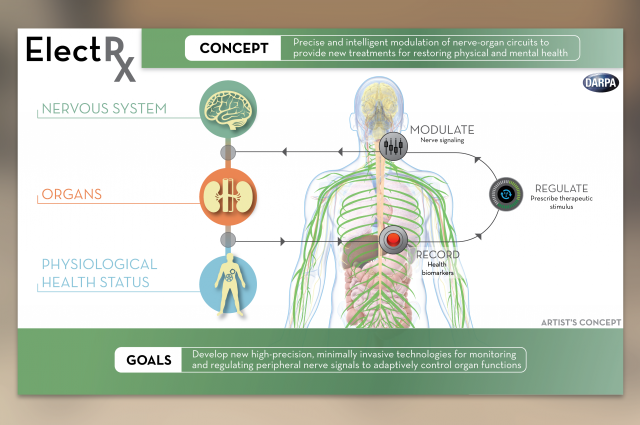Wolverine Implants: Fact or Fiction
Throughout the last 100 years, the world has witnessed incredible advances in medicine that have dramatically improved the lives of the sick. But while there may be more drugs on the market than you could possibly fathom, many diseases can’t be treated by popping pills. That’s why DARPA is working towards a futuristic medical implant that not only continuously monitors the condition of your organs, but also helps your body heal itself when problems arise.
A program, known as Electrical Prescriptions (ElectRx), is attempting to develop technology that could “fundamentally change the manner in which doctors diagnose, monitor and treat injury and illness,” DARPA’s Doug Weber said. Going away from normal medicine, DARPA has plans to create a device that could be implanted and would work like an intelligent pacemaker, continually keeping track of the body’s condition and providing feedback in the form of a stimulus that would help maintain healthy organs.
The thought behind the implant is that it would behave as a neuromodulatory device. The definition of neuromodulatory is the reversible alteration, or “modulation,” of the nervous system through stimulation of various nerves. The change in neural activity can be completed by either drugs or electrical stimulation. Both of these components are introduced by implants.
The peripheral nervous system (the nerves outside the brain and spinal cord) is always monitoring your organs and creating responses to infection, injury or disease. Some conditions can cause this to go astray and rather than solving the problem; the peripheral nerve signals begin to worsen the situation, causing pain, inflammation and immune system problems.
This is where ElectRx’s tiny little device would help. After finding problems, it would send out electrical impulses to sections of nerves that help the body heal. This would help keep patients healthy. ElectRx devices would be similar in size to individual nerves and could therefore be implanted with ease, perhaps with a needle.
But ElectRx has got a long way to go before these devices can become a reality. Researchers need to first develop novel biosensors and also devise techniques that would allow the precise targeting of single nerves or small populations of nerve fibers that control relevant organs.















